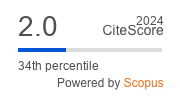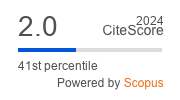| 2/2025 - 8 |
| Extra paper information in |
| Click to see author's profile in |
| Download PDF |
Author keywords
security, intrusion detection, authentication, encryption, data privacy
References keywords
security(14), systems(12), india(11), roedunet(9), technology(7), network(7), smart(5), privacy(5), internet(5), electronics(5)
No common words between the references section and the paper title.
About this article
Date of Publication: 2025-06-30
Volume 25, Issue 2, Year 2025, On page(s): 69 - 80
ISSN: 1582-7445, e-ISSN: 1844-7600
Digital Object Identifier: 10.4316/AECE.2025.02008
Abstract
This paper presents a comprehensive review of techniques developed to secure Internet of Things (IoT) infrastructures, motivated by the exponential growth of connected devices and their associated vulnerabilities. In addition to reviewing recent advances in the field, the paper provides experimental validation of selected methods through controlled simulations and real -world test scenarios. The analysis covers encryption protocols, authentication mechanisms, and artificial intelligence-based intrusion detection, emphasizing the effectiveness of layered defence strategies that include anomaly detection and real-time incident response. The study highlights both the technical limitations of current IoT devices and the potential of adaptive security models when properly implemented. It also highlights the importance of combining technical assurance with standardized risk management policies to increase system resilience. By integrating theoretical knowledge with practical experiments, the article contributes to the development of more robust and adaptive IoT security frameworks. |
| References | | | Cited By |
Information from Web of Science® will be displayed on the next page reload.
We were unable to retrieve information about this paper in SCOPUS®.
Message: [Returned results: 0]
There are no citing papers in the CrossRef Cited-by Linking system.
Disclaimer: All information displayed above was retrieved by using remote connections to respective databases. For the best user experience, we update all data by using background processes, and use caches in order to reduce the load on the servers we retrieve the information from. As we have no control on the availability of the database servers and sometimes the Internet connectivity may be affected, we do not guarantee the information is correct or complete. For the most accurate data, please always consult the database sites directly. Some external links require authentication or an institutional subscription.
Web of Science® is a registered trademark of Clarivate Analytics, Scopus® is a registered trademark of Elsevier B.V., other product names, company names, brand names, trademarks and logos are the property of their respective owners.
Faculty of Electrical Engineering and Computer Science
Stefan cel Mare University of Suceava, Romania
All rights reserved: Advances in Electrical and Computer Engineering is a registered trademark of the Stefan cel Mare University of Suceava. No part of this publication may be reproduced, stored in a retrieval system, photocopied, recorded or archived, without the written permission from the Editor. When authors submit their papers for publication, they agree that the copyright for their article be transferred to the Faculty of Electrical Engineering and Computer Science, Stefan cel Mare University of Suceava, Romania, if and only if the articles are accepted for publication. The copyright covers the exclusive rights to reproduce and distribute the article, including reprints and translations.
Permission for other use: The copyright owner's consent does not extend to copying for general distribution, for promotion, for creating new works, or for resale. Specific written permission must be obtained from the Editor for such copying. Direct linking to files hosted on this website is strictly prohibited.
Disclaimer: Whilst every effort is made by the publishers and editorial board to see that no inaccurate or misleading data, opinions or statements appear in this journal, they wish to make it clear that all information and opinions formulated in the articles, as well as linguistic accuracy, are the sole responsibility of the author.



